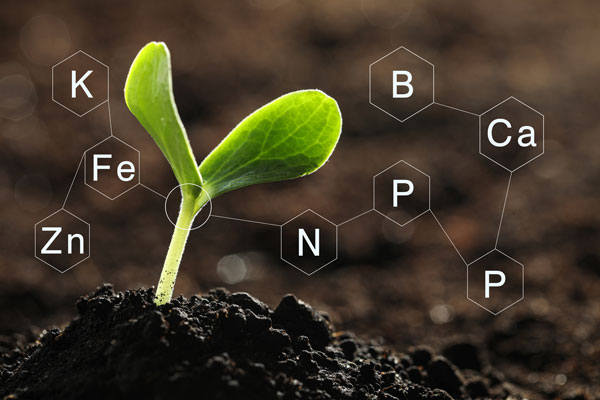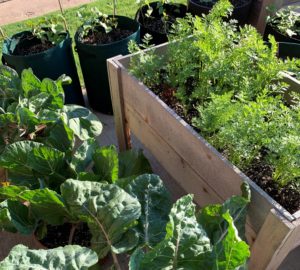Vegetable and flower plants need proper amounts of macro and micronutrients in order to flourish. Macronutrients are nutrients that plants need in larger quantities, while micronutrients are needed in lesser amounts. In this article you will learn what each of the macro and micronutrients are, why they are important, and what you can do to ensure your garden has the proper amounts of each. After all, healthy, nutrient-dense soil produces a healthy garden!
Macronutrients
There are nine macronutrients that plants require for a healthy life. There are three primary and three secondary macronutrients that come from the soil, and three additional macronutrients that are obtained from the atmosphere and water.
The Primary Macronutrients
The primary macronutrients are nitrogen (N), phosphorus (P), and potassium (K). The trio is often referred to as NPK on fertilizer packaging and other garden related products and resources. Let’s take a snapshot look at some of the ways each nutrient contributes to plant health.
Nitrogen is needed for plant development. One of its main functions is in the production of chlorophyll, plant proteins, and enzymes, which are essential for foliage growth. It is the nutrient most likely to be deficient in the soil.
Phosphorus aids with the synthesis of proteins, which are responsible for cell growth. It promotes root growth below the soil and flower and fruit development above it.
Potassium, also known as potash, is responsible for flower and fruit development, as well as improving a plant’s ability to endure environmental stress. What’s more, it helps plants develop strong stems and stalks. (You can learn more about NPK and how to fertilize your garden in this helpful article.)
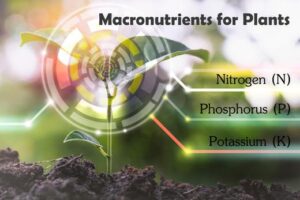
The Secondary Macronutrients
In addition to NPK, plants also require what are considered secondary macronutrients. These include calcium (Ca), magnesium (Mg), and sulfur (S).
Calcium helps make plant stems and roots stronger, and it plays a vital role in cell division and overall plant growth. It also helps plants absorb other nutrients.
Magnesium encourages flowers to set fruit and aids in the plant’s ability to take up nutrients, like phosphorus, from the soil. (You can learn how to identify and treat a magnesium deificiency in this helpful article.)
Sulfur helps plants develop a robust root system. It also plays a role in the production of chlorophyll, and it contributes to the plant’s ability to synthesize nitrogen.
Non-Mineral Macronutrients
Unlike the primary and secondary macronutrients, which plants take from the soil, the remaining three are obtained from the atmosphere and from water. They are carbon (C), hydrogen (H), and oxygen (O).
Carbon is the main energy source and building block for plant tissue. Hydrogen is necessary to produce glucose for plant energy. It also impacts seed germination, root elongation, and stomatal closure (i.e., the closure of the pores in leaves). Oxygen is responsible for cellular respiration, and it plays a crucial role in photosynthesis.
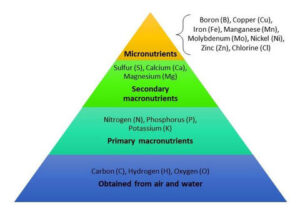
Micronutrients
Micronutrients, also called trace elements, while not used to the same degree as macronutrients, are, nevertheless, important to plant health. They may not be the stars of the show, but they play a supporting role. The eight primary micronutrients are boron (B), iron (Fe), manganese (Mn), chlorine (Cl), copper (Cu), nickel (Ni), molybdenum (Mo), and zinc (Zn).
Boron is known to help improve the quality and yield of produce.
Plants use iron to help maintain proper chlorophyll levels.
Manganese helps with the bioavailability of calcium, magnesium, and phosphorus.
Chlorine is needed for stomata (i.e., the pores in the leaves) to open and close, enabling the release of gases such as oxygen and carbon dioxide.
Copper enables photosynthesis and plant respiration, and it aids in overall plant strength.
Nickel plays a role in nitrogen metabolism, and it is important for seed germination.
Molybdenum also works in metabolizing nitrogen, and it participates in the plant’s use of phosphorus.
Zinc is needed to produce plant hormones and proteins and helps plants withstand low temperatures.
This article contains affiliate links. If you make a purchase using one of these links, I will receive a very small commission at no additional cost to you, and it will help me maintain this website. Rest assured, I only recommend products I actually like!
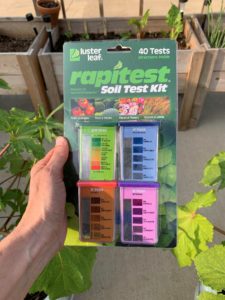
How to Know if Garden Soil Contains Sufficient Nutrients?
Now that you have seen a partial description of the critical functions each of these macro and micronutrients play, it is easy to understand how a deficiency in any one of them can negatively affect plant health and productivity. So, what can you do to ensure that your garden soil is providing plants with the proper nutrition they need?
Test the Soil
The first thing you can do to assess the nutritional status of the soil is to perform a soil test. If your garden soil is deficient in nutrients, it will most likely be deficient in the macronutrients nitrogen, phosphorus, and potassium (NPK). NPK levels are easily evaluated using simple and inexpensive at-home tests that are available online. This is the one I use. Once you determine the NPK levels, it is easy to make any necessary adjustments by amending the soil with the nutrient needed.
If you want a more complete assessment that includes micronutrients, you can use this test. It requires sending the sample to a lab, but test results are available via an app a day or two after they receive the sample. It costs a bit more, but it is still affordable.
Lastly, you can contact your local county extension or agricultural agent. Usually, each county’s website has instructions on how to obtain a soil sample and where to send it for evaluation. Some counties charge a fee, but it is generally reasonable. The downside is that it may take a few weeks to get test results back, so plan accordingly.
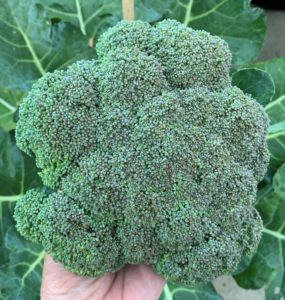
Understand Specific Nutritional Needs
Different plants have different nutritional needs. For example, broccoli, cauliflower, Brussel’s sprouts, and tomatoes need more nitrogen, thus, potentially creating a nitrogen deficient in the soil. On the other hand, legumes, like beans and peas, are considered nitrogen fixers because they produce carbon for soil microbes, which in turn produce nitrogen. Being aware of each plant’s needs can help you plan your crop rotation accordingly.
Eliminate Synthetic Pesticides
Synthetic pesticides, like glyphosate, usually do not cause nutritional deficiencies in the soil, however, they can prevent plants from absorbing nutrients. Instead, use organic measures to control garden pests. Pure, cold-pressed neem oil with naturally occurring azadirachtin is a safe and effective alternative. You can learn more about neem oil and how to use it to combat pests and plant diseases in this helpful article.
How to Amend Soil to Replenish Nutrients
Regardless of the size of your garden or whether you grow in rows, beds, or containers, the soil will need amending from time to time. Both compost and organic fertilizers are good options for soil amendment. You can learn the advantages of each in this helpful article as well as how to start a compost pile in this article.
When purchasing an organic fertilizer, look for ones that include trace elements and micronutrients in addition to NPK.
Microbes play an important role in soil and plant health by protecting plants from pests and diseases and by converting nutrients into forms that plants can use. To protect and promote the health of soil microbes, refrain from tilling the garden so as not to disturb the microbial web, and use organic mulch to protect the soil and thus the microbes from washing away.
Thank you for reading this article! If you found it interesting or helpful, please consider sharing it with others via email and social media!
